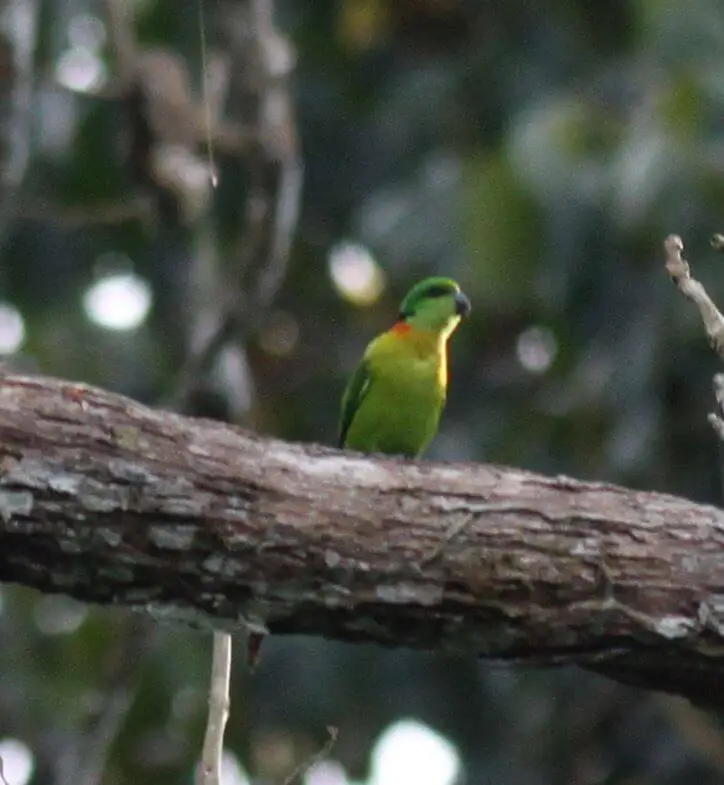Black-collared Lovebird 13 cm, 39–41 g. Head green, with narrow black hind-collar and yellow neck; rump deep blue; rest of upperparts dark green with blackish flight-feathers; outer tail feathers with broad orange-red markings against a black subterminal bar.
Immature lacks a collar. Race Zenker replaces yellow with red on the neck and below hind-collar, mini with less intense red than Zenker.
Systematics History
Editor’s Note: This article requires further editing work to merge existing content into the appropriate Subspecies sections. Please bear with us while this update takes place.
The original description contained dual spellings of species name; present spelling selected by First Reviser. Three subspecies were recognized.
Subspecies
Agapornis swindernianus swindernianus Scientific name definitions
Distribution
patchily distributed in Sierra Leone, Liberia, Ivory Coast, and Ghana.
Agapornis swindernianus zenkeri Scientific name definitions
Distribution
Agapornis swindernianus emini Scientific name definitions
Distribution
Distribution
Editor’s Note: Additional distribution information for this taxon can be found in the ‘Subspecies’ article above. In the future, we will develop a range-wide distribution article.

Habitat
Mature and secondary lowland and gallery forest, 700–1200 m, particularly favoring fig trees and cultivated clearings. Found high in primary forest trees or low in secondary growth, depending on foliage level.
Movement
Flock sizes larger in the dry season, Gabon, but no evidence of migration.
Diet and Foraging
Black-collared Lovebird Fig seeds, especially from stranglers, and the fruit of Rauwolfia, Harungana, and Macaranga, and ripe maize on the ground; repeatedly observed coming in small flocks (5–10) at dawn to feed on the fruit of oil palm, and noted at red flowers of Spathodea tree.
Sounds and Vocal Behavior
Not well documented. The commonest vocalization of the Black-collared Lovebird is a shrill disyllabic “sri-leee”. When perched, makes a variety of chattering noises. Large flocks maintain continuous twittering.
Breeding
Nestlings Jan–Feb in Gabon. No other information, though nesting in E Zaire and Uganda is likely in Jul.
Conservation Status
Not globally threatened. CITES II. Generally reported as rare or uncommon except in Gabon, where common; this perhaps reflects observer activity and sensitization to the species.





















